

European
Nuclear Society
e-news
Issue 32: April 2011
While ENS NEWS N° 31 charted new waters with a first-ever “special” devoted exclusively to one subject - education and training - N° 32 sees us return to the comfortingly familiar surroundings of a “normal” edition. And yet this edition bears more than a passing resemblance to its predecessor, insofar as once again one subject dominates its columns. The calamitous sequence of events that unfolded at the Fukushima nuclear power plant after the unprecedented earthquake and tsunami has, to a varying degree, dominated our agendas. The 25th anniversary of the Chernobyl accident, on 26 April, will give added significance to the accident at Fukushima. Indeed, comparisons between the real and perceived dangers of both accidents are already common currency. With old fears and legitimate concerns having inevitably put the nuclear industry in the international spotlight now is a time for clear heads and a considered response, not for faint hearts or hesitation.
More than ever it is incumbent upon the nuclear community to reiterate its commitment to promoting the highest possible standards of nuclear safety. That goes without saying and may appear to some to be a self-evident platitude; after all, safety has always been our top priority, so nothing has changed there. Well, we may take it as a given that our nuclear power plants are safe, but we haven’t always succeeded in communicating that fact clearly and unequivocally to a wider public. Since the events of 3/11 failure to communicate this fact is simply not an option. Safety must be seen to be one of our “core values.” At a time when emotions are running understandably high the need for careful reflection and for the presentation of facts based on scientific rather than partisan considerations is paramount. Calm analysis rather than hasty judgement is the order of the day. Equally important is the need to show and convince people that we have learned the lessons of the past and will apply then to the present and the future.
So, not surprisingly then, events at Fukushima and Chernobyl feature regularly in ENS NEWS N° 32. We kick off with an ENS NEWS section almost entirely devoted to analysis of events in Japan. First up, the Word from the President piece outlines chronologically the action that has been taken to produce the safety risk and assessment tests that will be carried out at all of Europe’s nuclear power plants. Andrew Teller then gives his personal take on the likely repercussions of 3/11on future nuclear power generation in general. This is followed by the ENS High Scientific Council’s official statement about Fukushima. Finally, the section includes an OECD/NEA abstract on the subject of medical isotopes that was submitted to the RRFM conference in Rome (20 – 24 March 2011).
The ENS Events section features a teaser on the upcoming NESTet 20011, an ENS conference dedicated to the subject of nuclear education and training.
The Member Societies and Corporate Members’ section features contributions from the Hungarian Nuclear Society, the Belgian Nuclear Society, SCK-CEN, the Finnish Nuclear Society, the Spanish Nuclear Society and the Bulgarian Nuclear Society.
The YGN Report section contains an article written by the Czech chapter of the YGN (on PIME 2011, in Brussels, 13 – 16 February 2011) and a piece from Belgian YGN chapter on the first edition of their new newsletter.
The ENS World News section features a press release detailing the recent launching of WiN Europe and some recent articles from NucNet (no prizes for guessing what subject has been dominating the international nuclear press of late!).
Enjoy ENS NEWS N° 32 and don’t forget…your comments and suggestions are always welcome.
|
http://www.euronuclear.org/e-news/e-news-32/presidents-contribution.htm


The harrowing pictures of devastation following the earthquake and tsunami that hit the eastern coast of Japan on 11 March were a sobering reminder of the awesome power and unpredictability of nature. Of course, no-one can prevent such catastrophes from occurring, but the resulting serious accident at the Fukushima nuclear power plant highlighted how vital it is to constantly reassert our commitment to upgrading safety levels at nuclear installations. In terms of nuclear safety and security events in Japan have, inevitably, raised the bar even higher. Safety always has been - and will always be - an absolute and non-negotiable priority for the nuclear community. For some of us this may appear to us to be a self-evident truth but, as unfolding events in Japan have shown, it can never be emphasised enough or too often. The nuclear community must do all it can to communicate this reality to the public. It is absolutely vital that the lessons of Fukushima are learned and that we are seen to be doing all we can to ensure that they are.
On 15 March, an extraordinary meeting on the impact of the Fukushima accident was convened by the European Commission (EC). During the meeting EU energy ministers, regulators, experts and industry representatives agreed on the need for special risk and safety assessments (the so-called "stress tests") to be carried out at operational nuclear power plants in Europe. The term “risk and safety assessments” is used in preference to “stress tests,” which has a negative connotation due to its association with the financial crisis of 2007. These assessments must be exhaustive and deliver a clear and objective assessment of the plants’ intrinsic safety levels. At the meeting the EU’s Energy Commissioner, Günther Oettinger, underlined the need for harmonised safety standards to be in place at all of the Community’s 143 nuclear reactors. Different reactor types, their age and technical parameters, as well as the type of emergency cooling systems they have in place, should be among the factors taken in account during the assessment process. In addition, seismicity levels, flood protection systems and procedures in the event of loss of cooling systems or power should also be analysed.
Naturally, the nuclear community was quick to respond and is, as it should be, at the forefront of efforts to ensure that the correct scope and methodology for the risk and safety assessments are agreed upon and then carried out. Here is a chronological run-down of what has happened since 15 March:
On 21 March, ENISS (the European Nuclear Installations Safety Standards) group, whose principal mission is to bring together decision-makers, operators and specialists from the nuclear industry with European regulators in order to identify harmonised safety standards, convened an extraordinary meeting of its Steering Committee. ENISS, NIS (the European Nuclear Energy Forum’s Nuclear Installations Safety Group) are working tirelessly to draw up what they refer to as the “STORE” (Safety Terms of Reference) for the reassessment of Europe’s nuclear power plants.
On 23 March, WENRA (the Western European Nuclear Regulators’ Association) submitted a proposed outline of the risk and safety assessments. WENRA has been working on establishing the scope, methodology and time frame of the assessments. It is also collaborating closely with the European industry at every stage of the process and is awaiting the industry’s feedback on its proposal.
On 24 March, I attended the extraordinary meeting of ENEF’s Risks Working Group, in Brussels, where ENISS presented its Work Programme. During the meeting it was reiterated that harmonised risk and safety assessments must be performed according to a clear and transparent methodology at all of Europe’s nuclear power plants. The process must begin on 1 June and be completed by the end of 2011.
On 12 May, a WENRA task force will present its proposal on the risk and safety assessments to the European Nuclear Safety Regulators’ Group (ENSREG), which is an independent body consisting of representatives of the regulatory authorities in all 27 EU Member States. This proposal will then be presented and further discussed at the European level. The assessments should begin on 1 June and all nuclear power plants in the EU should have been assessed by the end of the year.
The High Scientific Council of ENS, of which I am a member, released a statement on events following Fukushima. That statement is featured in this edition of ENS NEWS and I urge you to read it.
http://www.euronuclear.org/e-news/e-news-32/hsc.htm


The information gathered from the Japanese authorities permit to draw a rough picture of the sequence of events that led to the Fukushima nuclear accident. Among the 6 reactors at Tokyo Electric Power Company's (Tepco's) East coast Fukushima Daiichi nuclear power plant, reactors 1, 2 and 3 were in operation when the magnitude 9.0 earthquake struck. During the earthquake, the safety rods were automatically inserted in the three running reactors, stopping the chain reaction. At the same time, the grid power supply was blown out, and the auxiliary reactor core cooling system started normally, providing temporary cooling to the reactors. The same scenario then applied to the three reactors. At the time of the shutdown, the decay heat that needed to be removed from the cores amounted to about 7% of the nominal power of the reactors. Unfortunately, the 7 to 10 meter tsunami wave that hit the coast in the plant area after the earthquake seems to have caused the failure of the heat sink necessary to cool the reactors on a long-term basis. The cooling of the reactors then depended on the vaporisation of the water available in the reactor vessel and in the other reservoirs in the plant. The steam produced inside the reactor vessel was condensed in the condensation vessel, whose temperature and pressure began to rise slowly. A few tens of hours later, it was decided to vent some steam outside this vessel in order to reduce the pressure. Unfortunately, the steam appeared to contain some hydrogen, produced by the oxidation of the overheated fuel cladding. This hydrogen, vented in the top part of the reactors buildings, exploded when it came into contact with air.
At this stage, the presence of hydrogen and of volatile fission products like iodine and caesium in the released steam suggested that the temperature of the fuel was such that severe damage of the fuel claddings might have taken place inside the reactor vessel.
Pumping seawater into the reactors was decided as an ultimate measure to cool the reactors, to maintain the integrity of the reactor and containment vessels, and to confine the radioactivity. This procedure seems to have succeeded so far in reactors 1 and 3. A confinement leak in reactor 2 containment structure has been dreaded, but was not confirmed as of March 18th.
As another dramatic consequence of the earthquake, the storage pools which contain the spent fuel of reactors lost some of their water. Consequently, the spent fuel rods might have been insufficiently cooled and exposed to air. This might have resulted in heating of the spent fuel, with severe degradation of the fuel zirconium alloy cladding and subsequent release of part of the volatile fission products it contains into the atmosphere. A high level of radioactivity was measured around reactor 4.
The local population has been evacuated in time, and does not seem to have received radiation doses liable to induce health effects.
It is still premature to assess the possible consequences of the accident. For reactors 1, 2, 3, the amount of released radioactivity will depend on the resistance of the confinement vessels, and it is hoped that the ongoing procedure to cool the reactor cores will finally succeed, as the heat produced by the cores decreases every day. The outcome will also depend on the ability of the operators to refill and cool the pools containing the spent fuel.
One can note that, contrary to the previous nuclear accidents, Three Mile Island and Tchernobyl, a major external hazard (earthquake and tsunami) is the primary cause of the accident.
It should be stressed that the magnitude of the tsunami that struck Japan was beyond the design value to which the reactors were supposed to withstand. It will be the task of seismologists and earth scientists to determine if the probability of occurrence of such extreme events have really been underestimated during the reactors design, or if these events are so exceptional that the residual risk could a priori be considered acceptable.
Nuclear power plants have proven their value to society in Japan and elsewhere. The recent events have also shown the associated risks. In the future public debate that will certainly take place in democratic countries about the use of nuclear energy, it will probably be difficult to weigh with serenity the advantages against the risks of this form of energy.
The European Nuclear Society expresses its deepest thoughts to the Japanese population.
Bernard Bonin, ENS High Scientific Council, Vladimir Slugen, ENS President
http://www.euronuclear.org/e-news/e-news-32/listening.htm


The Fukushima accident that started on 11 March 2011 is an event of major importance although it is far too early to assess its actual consequences. It would be unthinkable to me to devote this column to anything other than this disaster which struck Japan and the nuclear industry in its wake. It gives the advocates of nuclear power generation (NPG) reasons to feel caught on the horns of a dilemma. On the one hand, the natural catastrophe that battered the north-western part of Japan was of an unprecedented magnitude. The total number of casualties resulting from the earthquake and the tsunami is now in the range of twenty-eight thousand and might still grow further. In such conditions, one might be tempted to think that when things go that bad, it is hardly surprising if industrial facilities do not fare well. On the other hand, it can be argued that the rule of the game has always been that nuclear power plants would be spared this worst scenario no matter what. But feeling torn between these two attitudes is nevertheless a luxury that only remote spectators can afford. It must be recognised that the nuclear consequences of the natural disaster did seriously worsen the plight of a Japanese population already terribly affected by the elements.
What the advocates of nuclear energy might think or hope or try to argue will be drowned in the reactions of the society at large. The future of nuclear power generation will keep being shaped in the usual political arenas but the reactions worldwide are far from homogeneous. Unsurprisingly, the opponents of nuclear energy have found in the Fukushima accident renewed grist to their mill and some governments have already taken measures against NPG under their influence. However, some commentators and industry analysts not linked to the nuclear industry are taking a view much more balanced than what could have been expected only a decade ago. They quite rightly point out that getting rid of nuclear energy is not going to be done overnight and that the known advantages of this energy source make it undesirable to do so. This situation is noticeably different from the one prevailing before the “nuclear renaissance”, when expressing anti-nuclear sentiment in the media was almost a fashion. In these peak-oil times, which attitude is going to prevail where is not easy to foretell. This is where more time is needed.
Since my focus has always been the cognitive aspects of the nuclear debate, I would like to offer the following provisional observations:
3-11 painfully confirms that past probabilistic safety analyses occasionally fail to take all relevant factors into account. In the case of Fukushima, the probability of a severe accident was not the result of the combination of the probabilities of malfunctions of the various components of the reactor safeguard systems under various scenarios. It turned out to be equal to the probability of incurring an earthquake bringing the reactor to a halt followed by a tsunami drowning the emergency power supplies. But how does one assess the probability of such an event without the benefit of hindsight? This tells me two things. First, even members of the NPG community will have to take care not to fall prey to the hindsight bias. They should bear in mind the title of a recent book by Duncan Watts: “Everything is obvious (once you know the answer)”. Second, a purely probabilistic approach to safety is not sufficient if we are to comply with the above-mentioned “no severe accident no matter what” rule. Past history shows that, if we are able to identify the worst cases we must protect ourselves against, we are much less able to identify all the relevant accidental sequences that can lead to them. Since different accident scenarios carry different probabilities of occurrence, a deterministic approach is needed to guarantee that the situation will not run out of control if a safeguard function is lost, even if we have not identified precisely all the scenarios liable to lead to it.
The Fukushima catastrophe illustrates once more the asymmetry of the respective stances of the critics and supporters of NPG. As far as I can tell, the anti-nuclear organisations have always underlined the seismic threat to nuclear power plants (NPPs) in Japan but have been much less vocal about the tsunami risk. In the present case, the NPPs weathered out the earthquake very well only to be overcome by the natural threat that they had not underlined. So, in a way, the critics of nuclear energy were quite mistaken in the appraisal of the risks incurred. Nevertheless, it is the NPP planners who are in the hot seat; the opponents of nuclear energy have no responsibility to take for the gap in their own analysis. The sad conclusion from this observation is that forecasting disasters seems to be a winning strategy: one can rest assured of being confirmed by the facts … eventually. But is this a sound strategy for making decisions? This question might also be hotly debated in the coming months. Furthermore, while the problems caused by NPG in the present circumstance are glaring, the drawbacks of alternative solutions will remain for ever hidden in the haze of counterfactual thinking: what would have happened if Japan had followed the recommendations of the opponents of nuclear energy and opted for wind machines instead of NPPs? Wouldn’t the earthquake and the tsunami have combined their strengths to destroy all the wind-driven (on-shore and off-shore) generating capacity in the area where they struck? To what effect? Such questions deserve attention when trying to achieve a balanced assessment of the situation but I wonder if they will be considered at all.
Lots of investigations are sure to take place to assess whether the older plants in operation elsewhere are still fit to continue operating at an acceptable level of risk. Public opinion is keen to equate ageing with increased risk. This is to miss completely the point of all the plant life improvement and extension programmes performed in the world (the so-called PLIM/PLEX programmes). The real question is not whether a plant must reach retirement at any given predefined age but whether its performance in terms of risk can be improved to achieve the levels of the latest models designed. This is where all organisations dealing with NPG will have to undertake a large communication effort to overcome the prevailing misconception regarding ageing.
As mentioned above, no meaningful conclusion is possible at present. Let me offer one forecast in the meantime: the Fukushima accident will shed new light on Three Mile Island. Until 3-11, TMI was standing alone in its category. Much to our regret, we have now a second case of interruption of the core cooling function. No doubt highlighting the similarities and the differences between the two accidents will improve our understanding of both.
http://www.euronuclear.org/e-news/e-news-32/medical-isotopes.htm

The following abstract was submitted for the 2011 RRFM conference, which took place in Rome from 20 – 24 March 2011. You can read the full paper by clicking on the link that follows the abstract.
At the request of its member countries, the OECD Nuclear Energy Agency (NEA) has become involved in global efforts to ensure a reliable supply of molybdenum-99 (99Mo) and its decay product, technetium-99m (99mTc), the most widely used medical radioisotope. The NEA established the High-level Group on the Security of Supply of Medical Radioisotopes (HLG-MR).
The main objective of the HLG-MR is to strengthen the reliability of 99Mo and 99mTc supply in the short, medium and long term. In order to reach this objective, the group has been reviewing the 99Mo supply chain, working to identify the key areas of vulnerability, the issues that need to be addressed and the mechanisms that could be used to help resolve them. The collective efforts of HLG-MR members and nuclear medicine stakeholders have allowed for a comprehensive assessment of the key areas of vulnerability in the supply chain and an identification of the issues that need to be addressed.
As a result of the work undertaken to date, the NEA has released three reports under the new The Supply of Medical Radioisotopes series. These reports discuss the uneconomical situation of the supply chain, other vulnerabilities within the supply chain and alternative technologies to produce 99Mo/99mTc. From this work, the NEA Secretariat and the HLG-MR have started to develop the policy approach and recommendations for governments, industry and other stakeholders that will outline the foundation for ensuring the long-term supply of 99Mo/99mTc.
To read the complete paper click on the following link:
![]() THE SUPPLY OF MEDICAL ISOTOPES - AN ASSESSMENT OF THE MARKET ECONOMICS, ALTERNATIVE TECHNOLOGIES AND PROPOSED POLICY APPROACH TO ACHIEVING SUSTAINABILITY
THE SUPPLY OF MEDICAL ISOTOPES - AN ASSESSMENT OF THE MARKET ECONOMICS, ALTERNATIVE TECHNOLOGIES AND PROPOSED POLICY APPROACH TO ACHIEVING SUSTAINABILITY
![]() Downlad presentation: THE SUPPLY OF MEDICAL ISOTOPES
Downlad presentation: THE SUPPLY OF MEDICAL ISOTOPES
http://www.euronuclear.org/e-news/e-news-32/nestet.htm


NESTet is the ENS conference on nuclear education and training. It is designed to facilitate an exchange of information and the sharing of best practice. It is an important networking opportunity for better co-ordination and collaboration between different stakeholders in nuclear education.
Setting the Scene: the education and training challenge
What are the needs with regard to nuclear education and training?
How to motivate people to choose a career in nuclear?
Developing skills for tomorrow’s leaders
Centres of Excellence: Academia and their programmes
What must be done to close the knowledge gap?
What must be done to promote harmonisation?
What is the situation with regards to infrastructure and tools for nuclear education and training?
What role for international co-operation?
An updated programme is now available on www.nestet2011.org
NESTet 2011 Gold Sponsor
|
|
http://www.euronuclear.org/e-news/e-news-32/Nukleon.htm

Preserving knowledge about the safe applications of nuclear energy, passing it on and increasing it is a great challenge. The publication in Hungarian of the latest results relating to both education and research and development is very important. Therefore, the Hungarian Nuclear Society decided to start up an online journal, which appears regularly in Hungarian. The journal, called NUKLEON, was first published in 2008.
NUKLEON features articles from a variety of fields, including reactor physics, thermo hydraulics, fusion technology, operational and safety regulations, radio-chemistry, radioprotection, radioactive waste treatment and education. In the journal you can regularly read young students’ reports, as well as articles written by a more experienced generation of scientists. The Hungarian Nuclear Society has always paid great attention to public education in Hungary, primarily in physics. It has monitored the status of education in this domain because this is fundamental to providing a supply of future nuclear physicists. As a result, articles and reports presenting developments in this field are regularly published. Particle physics research in Hungary is increasingly producing significant results and, therefore, the subject is regularly featured in the journal as well. To increase the standard of the articles, they are reviewed by experts before being released.
Nukleon is an electronic publication, thereby reducing the economic footprint, making archiving easier and reducing production costs. To reach the target readers, which include our members and the scientific and technical public in Hungary, the articles are made available to everybody for free, on the web. So far, we have published 13 editions of NUKLEON, featuring a total of 78 articles.
In our latest edition articles on the following subjects have been published:
The examination of fuel cells from the nuclear reactor block 4 at Paks NPP, Hungary
The temporary storage of radioactive waste at Paks NPP
The development of new decontamination techniques at nuclear power plants
New theoretical methods of handling the PSA uncertainty resulting from earthquakes
Modern physics courses at Klára Leőwey Secondary School, in Pécs, Hungary
A Korean nuclear power plant on the shores of the Arabian Gulf
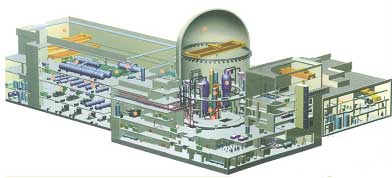
Retrospective dosimetry, a new forensic analytical method
Good household materials for retrospective dosimetry: floor tiles, bricks, porcelain, roof tiles etc.
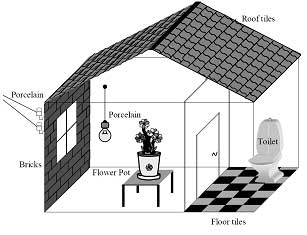
The first collisions in the Large Hadron Collider (LHC): collisions at 900 and 2360 GeV energy (see table below)
The connection between the impulse and energy of hadrons
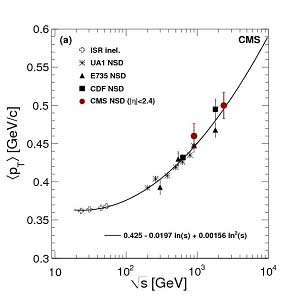
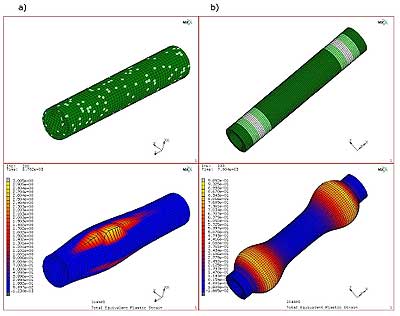
http://www.euronuclear.org/e-news/e-news-32/IRMM.htm

On 9 December 2010, a conference entitled Research in Nuclear Sciences: Impact on the Citizen, took place. It was co-organised by the Belgian Nuclear Society (BNS), the Belgian Nuclear Research Centre (SCK/CEN) and the Belgian Institute for Radio-elements. This international conference was hosted by the IRMM (Institute for Reference Materials and Measurement), which is part of the European Commission’s Joint Research Centre, in Geel (Belgium). The event, which was attended by over 90 participants, was also supported by the Belgian Presidency to the Council of the EU.
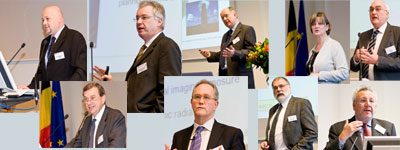
The conference was devoted to the impact upon citizens’ lives of research carried out in specific fields of nuclear science. During the morning session, distinguished speakers including the former European Commissioner for Research, Philippe Busquin, the Chairman of the Board of SCK/CEN, Professor Frank Deconinck and Prof. Thomas Fanghänel, Director of ITU, presented several aspects of the implications for citizens of research in the nuclear sciences. These and subsequent presentations focused on health aspects, as well as basic science in the fields of actinide research and neutron data measurements. The concluding remarks were given by Sabine Laruelle, Belgium's Minister in charge of Science Policy.
During the afternoon, participants were invited to take part in laboratory visits to both the IRMM and the Belgian Nuclear Research Centre (in Mol).
More information can be obtained from the Belgian Nuclear Society at:
www.bnsorg.eu/
Contact: Didier Haas, BNS Chairman
http://www.euronuclear.org/e-news/e-news-32/sck-cen.htm

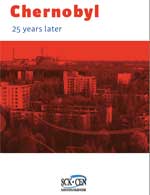
On 26 April 1986 reactor N°4 of the Chernobyl nuclear power plant in northern Ukraine exploded. Today, 25 years later, the causes and consequences of the disaster have been thoroughly examined. Many lessons have been learnt and as a result new safety measures have been implemented worldwide.
To mark this anniversary SCK-CEN has published a brochure describing the current status of knowledge with regards to the major technical aspects and the human error factors that caused the accident. The brochure also describes the repercussions the accident had on a local population, environmental and institutional level. Its aim to provide the media, politicians and all those who are interested in the subject - and respect the transparency, independence and integrity of science - with the facts surrounding the tragic events of 25 years ago.
Here is a link to the brochure and to the related SCK-CEN press release: www.sckcen.be/en/Press/Press-releases/SCK-PR-0195
Frank Deconinck
Professor Emeritus, Biomedical Physics
Vrije Universiteit Brussel;
Chairman of the SCK-CEN (the Belgian national nuclear research centre);
Honorary President of ENS
http://www.euronuclear.org/e-news/e-news-32/ats.htm

On 8 March 2011, the annual meeting of the Finnish Nuclear Society (ATS) took place in Tieteiden talo, Helsinki. About 40 members of ATS participated. The meeting nominated one new member, Olli Okko, to the ATS Board. Apart from that, the existing Board and the President, Dr. Eija-Karita Puska, will continue for another term. During the annual meeting ATS also nominated Jussi Manninen and Professor Emeritus Risto Tarjanne as new honorable members. The Society also awarded Antti Hakola the Erkki Laurila award, which is given annually for the best scientific paper published in the ATS magazine, Ydintekniikka.
After the official business was conducted, former IAEA deputy director general, Olli Heinonen, gave a presentation on the main challenges relating to nuclear proliferation in North Korea. The presentation is available on the ATS web site at: (www.ats-fns.fi/index.php).
The first ATS event of 2011 took place on 27 January, in Eurajoki, near the Olkiluoto NPP site. Erik Setzman, from SKB, and Vesa Ruuska, from Posiva, talked about the real issues relating to spent nuclear fuel management in Sweden and Finland. About 30 members of the Society participated. Mr. Setzman’s and Mr. Ruuska’s presentations are available on ATS web site at: (www.ats-fns.fi)
Energy Channel, a working group of ATS, organized its traditional Radioactive Women Seminar at the Post Museum, in Helsinki, on 17 March. Energy Channel was founded by seven active female members of ATS in 1990. It distributes information on energy matters, radiation and radioactivity to decision-makers and other citizens’ groups, especially women. The information is distributed through the organisation of seminars and lectures, the production of information material, guided visits to nuclear sites and also - to some extent - by giving interviews to the media.
The main speakers at the seminar were Tellervo Kylä-Harakka-Ruonala, Director of the Confederation of Finnish Industries (EK) and Ritva Hirvonen, Development Manager at Fingrid. A last-minute update on the Fukushima accident in Japan was also included in the agenda.
The structure of the web pages of the Finnish Nuclear Society (ATS) web site has been improved, especially to make the pages easier to maintain. The visual lay-out has also been improved. There's updated content in the English version and most of the general articles have English translations. The updated pages in English are available via the following link: www.ats-fns.fi
The last (i.e. the fourth) steam generator was transferred to the reactor building at the Olkiluoto 3 site and on 31 January was lifted into its concrete bunker. The fourth steam generator was the last main component of the reactor coolant system to be transferred to the installation site. The steam generators are the largest components on the nuclear island. Each weighs about 520 tons and the main crane of the reactor building was equipped with separate installation cranes for the handling of the steam generators. (Source: TVO news, www.tvo.fi/www/page/3524/ ).
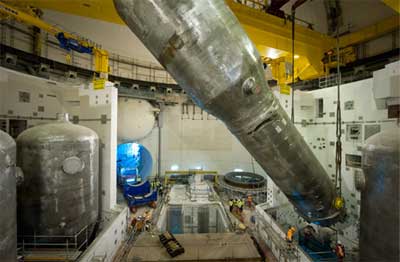
Lifting of the fourth steam generator at Olkiluoto 3 nuclear power plant (Source: TVO)
http://www.euronuclear.org/e-news/e-news-32/sne-news.htm

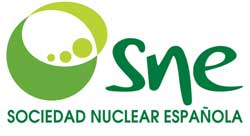
On 24 February, the Spanish Nuclear Society (SNE) organised a seminar entitled Nuclear Power Plants in 2010: Experiences and Perspectives. This was the latest edition of a well-established annual event. This year representatives of the Spanish nuclear industry discussed, along with university staff, teachers and students, issues relating to nuclear power plant operation in 2010 and to the future of the nuclear industry.
This year, a special session was devoted to the subject entitled: Economic Crisis and Energy Model. It was moderated by Lola Morales, acting for the last time in her capacity as Vice President of SNE. The guest speakers present were Pedro Rivero, former UNESA president and José Claudio Aranzadi, former Minister of Industry and Energy. Their basic messages were that Spain is the European country with the most expensive industrial electricity tariff, followed by Slovakia, Italy and Cyprus. The cheapest are those with the highest percentage of nuclear production, namely France and Finland. The UK’s proces rank half-way down the tariffs league table.
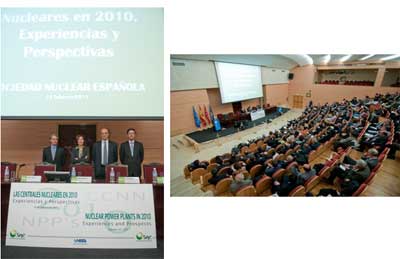
During the SNE Ordinary General Assembly, which took place after the seminar, Lola Morales was elected new President of the Society and Diego Molina was elected Vice President.
The 37th Annual Meeting will be held from 28 - 30 September 2011, in the city of Burgos, to coincide with the 40th anniversary of the Santa María de Garoña NPP. The proposal of Nuclenor, the company hosting the meeting, that Antonio Cornadó, Communications Director at Nuclenor, be nominated Chairman of the Organising Committee was approved by the SNE Governing Board. All the relevant information about the meeting is available at: www.reunionanualsne.es.
The conference Nuclear Power Sector: Source of Power, Source of Jobs was held at the University of Cantabria (Santander) on 11 November. On 19 December, the SNE also participated in a seminar at the Spanish Congress entitled: Nuclear Energy: Used Fuel Management.
The new SNE website, www.sne.es , is now operational. This event went hand-in-hand with the previously-mentioned redesign of the logo and the finalising of the Annual Meeting web site at: www.reunionanualsne.es
The Spanish Parliament approved an amendment to the Sustainable Economy Act that allowed, at the owner’s request, a lifetime extension beyond 40 years. This took into account the decisions reached by the Nuclear Safety Council (CSN) and the evolution of demand and technology. This amendment will not affect the earlier decision to close Garoña NPP in 2013.
The Nuclear España Best Article Prize has been awarded this year to the paper entitled: La percepción pública de la energía nuclear en Europa del Este: pasado y presente, which was written by A. Álvarez and G. Jiménez from Westinghouse Electric, Spain. The consolation prize went to the paper entitled: El Mix Energético Español: evolución histórica y prevista de la estructura de producción eléctrica, which was written by J. Revuelta and R. López from Red Eléctrica de España.
An Honorific Citation was also given to the following papers: 25 Aniversario de la fábrica de elementos combustibles de Juzbado and Central Nuclear Ascó 2044.
http://www.euronuclear.org/e-news/e-news-32/bulgaria.htm


The members of the Bulgarian Nuclear Society (BgNS) include prominent scientists, physicists, engineers, chemists and other specialists in the field of nuclear science. In 1961, the country’s first nuclear reactor dedicated to scientific research was commissioned and in 1974 became operational. The view frequently expressed by international experts is that nuclear power specialists in Bulgaria have a high standard of professional qualifications and competence. BgNS was founded on 1 August 1991 in Auditorium 105 of the Faculty of Physics of the St Kliment Ohridski Sofia University. The constituent protocol was signed by about 100 colleagues and members concerned about the development of nuclear energy in Bulgaria.
BgNS is a non-profit-making organisation aimed at promoting the multilateral development of science, technology and their practical applications in the name of the safe and peaceful applications of atomic energy. It also aims to help create a more positive climate of public opinion and more a favourable attitude with regards to nuclear power matters. The BgNS concentrates its efforts on the following priority activities:
Establishing a forum for the exchange of knowledge, ideas and experience
Encouraging the extension of the safe use of nuclear science for the well-being of society
Keeping an open dialogue with the public on nuclear science and practical application issues and on promoting a radiological culture among the population
Co-operating with the state authorities, industrial companies and non-governmental organisations on every aspect of nuclear science through the testimony of experts
The priorities of the BgNS have been clearly outlined throughout its 20 years history : by organising conferences, seminars and scientific sessions where discussions are freely encouraged the BgNS assists professionals and clearly lays down its position on particular matters related to the nuclear energy development, radiobiology and radiation protection.
As nuclear reactors are one of the most advanced technologies applied today their management requires a very high standard of qualifications and professional skills. Organising forums at national and international level for the scientific and practical exchange of information is a major BgNS priority. The Society organises discussions and round tables involving journalists, representatives of non-governmental organisations and individual citizens. There are numerious events initiated by or organised with the active participation of the Society’s regional sections.
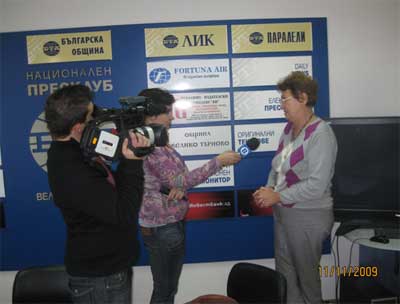
Press/news conference 2009
BgNS also organises its Annual International Conference entitled: Nuclear Energy for people. The purpose of this event is to give an opportunity for the exchange of ideas and experience between specialists in the nuclear field. These cover a vast range of topics, for example, alternative energy sources, radiation protection, environmental protection etc. Traditionally, the conference gives a possibility for young specialists to make their professional achievements known to a wider public.
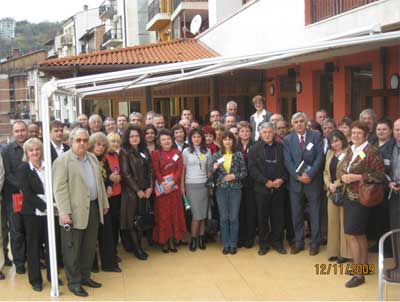
BgNS conference 2009, V. Tarnovo
The BgNS has the following categories of members:
Regular members
Associate members
Corresponding members
Honorary members
BgNS represents more than 400 professionals from nuclear power stations, research centers, scientific and engineering organisations and public authorities, who all work in order to promote the progress of the nuclear industry.
BgNS corporate members include the following companies:
KOZLODUY NPP
BELENE NPP
INRNE-BAS
FRAMATOME
EQE BULGARIA
RISK ENGENEERING Ltd
ENPRO CONSULT Ltd
THETA CONSULT Ltd
ATOMENERGOPROEKT
INSTITUTE OF ENERGY
QUANTUM ENGINEERING Ltd.
ONET TECHNOLOGIES BULGARIA
EMCO-JSC, BELENE
BELENE MUNICIPALITY
MARIE SKHODOWSKA – CURIE NUCLEAR ENERGY PROFESSIONAL HIGH SCHOOL, BELENE
ENEMONA Ltd
BgNS is a member of the European Nuclear Society (ENS) and has agreements signed with other nuclear societies.
http://www.euronuclear.org/e-news/e-news-32/ygn-reporter-pime11.htm


PIME (Public Information Materials Exchange) is a unique annual conference aimed at improving communications in nuclear sector. The main goal of the conference is to share knowledge on communications tools and strategies and to exchange ideas and network with colleagues from the nuclear field in order to increase public acceptance of the nuclear industry worldwide. PIME 2011 was held in Brussels and 170 nuclear communicators and young professionals from 29 countries from all over the world took part.
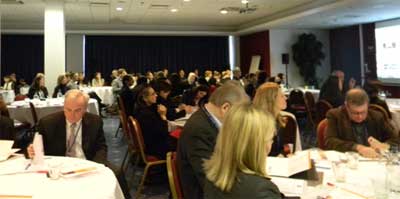
This year’s event kicked off with a short press conference on 13 February 2011, which was followed by a welcome cocktail and reception. The reception was sponsored by WiN (Women in Nuclear) Europe, an association that was established on 2 October 2010, in Budapest, Hungary. At the press conference WiN Europe presented its mission, namely to popularize nuclear energy and the nuclear industry with women and to encourage those women already working in the nuclear sector. WiN Europe brings together European women who are active in various fields of nuclear science, including technological applications, the radiation sector, etc. WiN Europe was founded by nine countries (Austria, Finland, France, Germany, Hungary, Romania, Slovenia, Sweden and Switzerland). Other European countries have been approached and invited to join the association in the future.
On 14 February, the first PIME 2011 presentations provided a short introduction to the challenges facing nuclear communicators, with a special focus on new skills and tools for exploiting social media. It was agreed that professionals in the nuclear industry should get more involved in social media, take the initiative rather than wait to be called upon. After all, they need to be pro-active. It was repeatedly emphasized that the old “safer than safe” marketing approach does not work anymore for the nuclear industry and that we definitely need a more innovative nuclear marketing and communications strategy. Social media are available and should be used on a daily basis to promote the nuclear industry. What’s more, we should use them to listen to what our customers are saying about us and our services so that we can react more effectively. Also, it is not important to answer every single question that is asked worldwide. Instead, we have to choose with whom to engage in a debate so that our communications and the debate itself serve a purpose and have an end result.

The plenary session called: What can we learn from other industries was very useful and interesting. Among the issues that were discussed during this session was the fact that the nuclear industry has to, more than ever, focus on providing feedback rather than simply giving information. We have to listen, analyse and process information and provide feedback based on it.
Communications tools have evolved and will continue to do so, but the fundamentals of good communications remain the same. And we should focus on them - simplicity, transparency, participation, virtual community, immediacy, openness, preparedness, etc. All these devices can markedly and positively influence public opinion and acceptance of nuclear energy in the future.

Between two sessions the candidates for the PIME 2011 Award for Communications Excellence were presented. Five short-listed candidates had been pre-selected in recognition of their communications achievements in the nuclear sector (industry, regulatory bodies, research centres, and national organizations), which had successfully connected with their audiences and fellow debaters, thereby helping to dispel common myths and misinformation regarding nuclear energy. These communications efforts have helped to improve the position of the nuclear sector worldwide. The five candidates were: Atomic Energy of Canada Ltd., Andra, Aren/Romatom/Nuclearelectrica SA, Belgian Nuclear Forum and the Hungarian Atomic Energy Authority. The winner of this PIME2011 conference was the Belgian Nuclear Forum, chosen by conference delegates, for the activities they organised at a rock festival. They successfully achieved their goal of sensitising young people to the benefits of nuclear energy and showing them how its multiple applications positively impact upon our lives. They were able to generate a lively dialogue aimed at helping overcome young people’s scepticism regarding nuclear energy.
After Day 1 of the conference participants enjoyed a traditional Belgium dinner in the typical Bruegel setting of the “Caves de Cureghem,” where various artists provided entertainment throughout the evening.
Day 2 of PIME 2011 concentrated on public relations and issues of major public concern. Presentations were given on a range of subjects, including non-proliferation, nuclear new build in Finland and Argentina and waste management and public acceptance in relation to a spent nuclear fuel repository in Sweden. The focus was on key messages, communications tools and target audiences. Argentina, for example, has launched an awareness programme aimed at popularising nuclear energy nationwide and increasing public acceptance (especially among young people) of the second Atucha nuclear unit. In Finland, the promotion of the Okiluoto NPP’s units 3 and 4 started a long time ago, so public opinion in Finland is in favour of nuclear new build. Videos and short clips about the campaigns were also presented.
Day 2 also featured 3 workshops: Communicating with young people, Establishing a dialogue with the local community and Media training for communicators and spokespersons. The workshop devoted to communicating with young people was especially popular (around 45 people attended it). During this workshop it was emphasised that young people are prepared for change, they accept it and they adapt to it very quickly. So, in order to succeed in communicating with them we have to adopt a similar approach. Also, we should definitely be very active, try many different tools to launch simple activities that prove successful with young people. Other tips about communicating with young people were: try to include them in your activity, do not just give an explanation, do not hide information from them, do not be scared of the public since people have the power to talk for you and in your favour (or against you), always control what people are saying about the nuclear sector, challenge young people, dare them to think and offer them a vision of the future so they can see that nuclear energy really has potential!

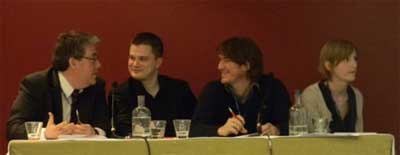

The final day of PIME 2011 was set aside for a technical tour of the Belgium Nuclear Research Centre, SCK-CEN, at Mol. Participants visited the BR2 reactor there, which has been operational since 1963 and the Hades underground laboratory where issues regarding the storage of radioactive waste underground are addressed. New projects like Myrrha and Guinevere were presented and one group visited the installation of the first lead-based ADS system. It is a critical assembly (kept in a subcritical state) connected to a deuterium accelerator, which together with tritium produces extra neutrons in order to make the reactor critical. This unique and innovative installation is built for the purpose of developing an advanced transmutation system and to investigate radioactive waste transmutation. Also, short visits to the hot cell area and the BR1 reactor were organised.
For 4 days PIME 2011 brought together many nuclear communicators. Lots of important issues were discussed, information from different countries was exchanged and experiences regarding nuclear communications were shared. PIME is definitely a very useful conference for all nuclear public information specialists who wish to enhance and share their know-how and explore new strategies for communicating nuclear.
This was my first “non-technical” conference and I really recommend that people working in nuclear communications visit and actively participate in PIME conferences. My participation definitely made me think more broadly about how nuclear communications are viewed. It also helped me to understand what issues are most important to the public and to young people in particular. This will help us find the right way of communicating with them and explaining all the benefits of nuclear energy, as well as its promise for the future.
Marija Miletić
Research Centre Rez Ltd.
Research Reactors Division
Czech Republic
mil@cvrez.cz
http://www.euronuclear.org/e-news/e-news-32/BNS-YG-newsletter.htm

The Belgian YGN chapter is one of the most active members of the YGN. It recently launched the first edition of its new BNS Young Generation Newsletter. Click on the following link and find out what the YGN is doing in Belgium.
http://www.euronuclear.org/e-news/e-news-32/win-europe.htm

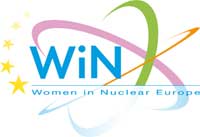
On Sunday February 13th 2011 the association Women In Nuclear (WiN) Europe, was officially launched in Brussels at the opening of the annual PIME Congress organized by the European Nuclear Society (ENS).
More than 170 people attended this event under the presidency of Dominique MOUILLOT, President of WiN Europe.
A round table moderated by Edit Herzog, MEP (S&D, Hungary) and member of the ITRE (Industry, Research and Energy) Committee, brought together the following speakers:
Ute Blohm-Hieber, Head of Unit D2 (Nuclear Energy, Transport, Decommissioning and Waste Management) of the European Commission’s Directorate General for Energy (DG ENER)
Claudine Hermann, Vice President of the European Platform of Women Scientists (EPWS)
Elena Dimitru, an expert in European environmental policies and assistant to Rovana Plumb, MEP (S&D Romania)
Andrea Bachrata, PhD, fellow at the IRSN (Institute for Radio Protection and Nuclear Safety) in Cadarache, France,
They launched a productive debate on the following themes:
“What role can WiN Europe play in communicating with the public and especially with the younger generation, in education and training, in competence renewal and knowledge transfer and in the fostering of diversity and gender equality in scientific and technical fields? What actions are being taken by WiN Europe to attract teenagers to scientific and nuclear professions? How can the collective expertise of WiN Europe be used by the European Community?”
The panellists expressed the interest taken by their respective institutions in WiN Europe’s initiatives and fields of expertise, particularly given the context of the nuclear revival and the need to develop the human resources necessary for the future.
Through actions aimed at promoting diversity in scientific and technical professions, WiN Europe will play a key role in the development of solutions to meet the current and future energy challenges of Europe.
Representing the young generation, Andrea Bachrata expressed her enthusiasm at being an active member of WiN Europe and the hopes that WiN Europe has generated for her future career.
WiN Europe was founded by 9 European countries and/or organisations: Finland, France, Germany, Hungary, Romania, Slovenia, Sweden, Switzerland and the WiN section within the IAEA. Since then, Bulgaria and Spain have also joined WiN Europe. Other countries are expected to follow suit.
WiN Europe brings together women professionals working in all fields relating to the various applications of nuclear technology and science (energy, medicine, biology, art, agriculture and space exploration). Boosted by the cohesion and dynamism of its members, WiN Europe is ready to meet the challenge and has embarked on a programme of actions that will contribute to the safe and sustainable development of the nuclear sector.
WiN Europe is also part of the WiN Global network, which counts some 3,100 members in 80 countries.
The WiN Europe association, which was first founded in Budapest on 2 October 2010 and registered as a legal entity under French law, has among its objectives the following:
To communicate with the public, and particularly with young people and women: to provide them with objective and accessible information about nuclear technologies and applications, as well as about professions active in these fields
To create a network for exchanging and sharing experiences and best practices
To provide collective competence and expertise for actors in the sector, in particular those working in the fields of education and knowledge transfer
To establish partnerships and promote cooperation and agreements with major European institutions, nuclear bodies, training and educational institutions and with other European networks engaged in the promotion of diversity in the field of science and technology
To participate in the programmes of the European Commission dedicated to the development of the nuclear sector
To contribute to the renewal and development of human resources for the future and to the promotion of diversity and gender balance within the European nuclear community.
Contact WiN Europe at: contact@win-europe.org
General Secretary: Stephanie Foulquier); Tel: +33 4 91 29 18 03
http://www.euronuclear.org/e-news/e-news-32/nucnet.htm


Level 7 is the most serious level on INES and is used to describe an event comprised of “a major release of radioactive material with widespread health and environmental effects requiring implementation of planned and extended countermeasures”.
This is only the second Level 7 accident in the nuclear industry. The first was at Chernobyl in 1986.
In a report to the IAEA, Japan’s Nuclear and Industrial Safety Agency (NISA) said the accident had been re-evaluated based on data showing the total amount of radioactivity released to the environment from the plant since it was hit by an earthquake and tsunami on 11 March 2011.
The report said figures show the total amount of iodine-131 discharged is estimated at 130 petabequerels (PBq) and caesium-137 at 6.1 PBq.
NISA said it estimates that the amount of radioactive material released to the atmosphere is approximately 10 percent of the Chernobyl accident.
NISA had initially rated the accident at Fukushima-Daiichi as Level 5, which means “accident with wider consequences”.
The new provisional Level 7 rating considers the accidents that occurred at units 1, 2 and 3 as a single event on INES.
Previously, separate INES Level 5 ratings had been applied for units 1, 2 and 3.
The provisional INES Level 3 rating assigned for unit 4 still applies.
Source: NucNet
Editor: david.dalton@worldnuclear.org
Japan Nuclear and Industrial Safety Agency (NISA) spokesman Yasuhiro Sakuma told NucNet that the initial discharge of low-level radioactive water had finished. He said there might be other low-level radioactive water elsewhere in the plant.
Plant operator Tokyo Electric Power Company (Tepco) has been discharging the low-level radioactive water into the sea to make room in storage facilities for highly radioactive water from the unit 2 reactor complex, where radioactive water 100,000 times the normal level in an operating reactor has been found in the turbine building basement.
There is a risk that this radioactive water might continue to leak into cable trenches and pits outside the unit’s controlled zone and from there flow into the sea.
Contaminated water has also been found in the turbine hall basements of units 1 and 3, although its activity is lower than the water at unit 2.
The contaminated water needs to be moved from the turbine building basements and from a concrete tunnel and trenches to various storage facilities.
The amount of water is estimated at more than 60,000 tonnes, the International Atomic Energy Agency said.
The water has been hampering work to restore the reactors’ cooling systems.
Tepco is working to lay hoses between the turbine buildings and the storage facilities so the water can be removed. Holes have already been bored in the walls of the buildings, but work to install the hoses has yet to begin, the Japan Atomic Industrial Forum (JAIF) said.
In addition, waste disposal facilities need to be closely checked before the procedure can begin, NISA said.
NISA said facilities must be checked for cracks that might have been caused by the earthquake, and that this could take up to a week.
Source: NucNet
Editor: mathieu.carey@worldnuclear.org
7 Apr (NucNet): Japan’s Nuclear and Industrial Safety Agency (NISA) has said an earthquake that struck northern Japan today has not had any significant impact on the Fukushima-Daiichi nuclear power plant, although at the Onagawa plant it disabled two out of three external electricity supply lines.
NISA spokesman Masaomi Koyama told NucNet that according to the NISA inspector onsite at Onagawa only one external electricity supply line is operational.
All three units at Onagawa in Miyagi Prefecture – on the coast to the north of Fukushima – shut down automatically during the 11 March quake that struck the same region and are now in cold shutdown.
The plant is owned and operated by Tohoku Electric Power Company.
Mr Koyama said that at Fukushima-Daiichi there has been “no specific event”.
Initial details from the US Geological Survey said today’s quake was magnitude 7.1 and at a depth of 49 km. It occurred at 23:32 at its epicentre, near the coast of Honshu, or 16:42 central European time.
Earlier, nitrogen was being injected into the primary containment vessel (PCV) of unit 1 at Fukushima-Daiichi amid concerns that hydrogen that has accumulated there could cause an explosion.
Injecting nitrogen is intended to displace oxygen inside the PCV, thereby reducing the risk of explosion caused by the combustible combination of hydrogen and oxygen.
Source: NucNet
Editor: david.dalton@worldnuclear.org
http://www.euronuclear.org/e-news/e-news-32/other-conferences.htm


2 - 6 May 2011
Nice, France
more

18 May 2011
Mol, Belgium
more

17 - 22 May 2011
Prague, Czech Republic
more

23 - 24 May 2011
Warsaw, Poland
more

5 - 6 July 2011
London, United Kingdom
more

Nagoya, Japan
Atomic Energy Society of Japan
email: global2011@jaea.go.jp
more
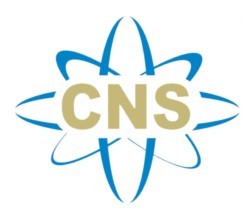
11 - 14 September 2011
Chinese Nuclear Society (CNS)
more
11 - 14 September 2011
Kraków, Poland
more
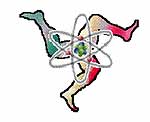
18 - 23 September
2011
Palermo, Sicily, Italy
more

28 - 30 September
Casta-Papiernicka, Slovakia
more

28 - 30 September 2001
Burgos, Spain
more

10 - 13 October 2011
Plzeň, Czech Republic
more

16 - 19 October 2011
Bucharest, Romania

6 - 11 November 2011
New Dehli, India
more

8 - 11 November 2011
Bansko ski resort, Bulgaria
more

17 -21 September 2012
Como, Italy
more
http://www.euronuclear.org/e-news/e-news-32/Member-Societies.htm

Austrian
Nuclear Society |
Belgian
Nuclear Society |
Bulgarian
Nuclear Society |
Croatian
Nuclear Society |
Czech Nuclear Society |
Finnish
Nuclear Society |
French
Nuclear Energy Society (SFEN) |
German
Nuclear Society (KTG) |
Hungarian
Nuclear Society |
The
Israel Nuclear Society |
Italian
Nuclear Association |
Lithuanian
Nuclear Energy Association |
Netherlands Nuclear Society |
The Nuclear Institute |
Nuclear
Society of Russia |
Nuclear
Society of Serbia |
Nuclear
Society of Slovenia |
Polish
Nuclear Society |
Romanian
Nuclear Energy Association (AREN) |
Slovak
Nuclear Society |
Spanish
Nuclear Society |
Swedish
Nuclear Society |
Swiss
Nuclear Society |
http://www.euronuclear.org/e-news/e-news-32/Corporate-Members.htm
Links to ENS Corporate Members |
AF-Colenco Ltd., Nuclear Technology
Department |
Alpiq Ltd |
Alpiq Suisse Ltd. |
Andritz AG |
Ansaldo Nucleare S.p.A |
AREVA NP |
AREVA NP GmbH |
Atomtex SPE |
Atomic Energy Council (AEC) |
Axpo AG link |
BKW FMB Energie AG |
Centralschweizerische Kraftwerke (CKW) |
Chubu Electric Power Co. |
Chilean Nuclear Energy Commisssion |
CCI AG (formerly Sulzer Thermtec Ltd) |
Design Bureau "Promengineering" |
NV Elektriciteits-Produktiemaatschappij Zuid-Nederland EPZ (Electricity
Generating Co. Ltd in the Southern Netherlands) |
E.O.N Kernkraft GmbH |
Euro Nuclear Services BV |
Electrabel, Generation Department |
Electricité de
France (EDF), Communication Division |
ENUSA Industrias Avanzadas SA |
EXCEL Services Corporation |
GE Nuclear Energy |
IEA of Japan Co. Ltd |
Japan Electric Power Information Center (JEPIC) link |
Kernkraftwerk
Gösgen-Däniken
AG |
Kernkraftwerk Leibstadt AG (KKL), |
Elektroinstitut Milan Vidmar |
L-3 Communications MAPPS Inc. |
| NRG Arnhem link |
NRG Petten link |
NUKEM Technologies GmbH |
ONET TECHNOLOGIES |
Paks Nuclear Power Plant Ltd |
Paul Scherrer Institute |
Polimaster Ltd |
|
Siempelkamp Nukleartechnik GmbH |
SKB (Swedish Nuclear Fuel and Waste Management Company) |
Studiecentrum
voor Kernenergie, Centre d’Etude de l’Energie
Nucléaire SCK/CEN |
Synatom |
Taiwan Atomic Energy Council (AEC) |
Taiwan Power Company (Taipower) |
"Technoatomenergo" Close
Joint-Stock Company |
Teollisuuden Voima Oyj / Industrial Power Company Ltd (TVO) |
Tokyo Electric Power Co. (London Office) |
Tractebel Engineering S. A. |
UNESA |
Urenco Limited |
USEC Inc. |
Vattenfall AB |
VTT Nuclear |
Westinghouse Electric Company link |
World Association of Nuclear Operators (WANO), |
|
http://www.euronuclear.org/e-news/e-news-32/editorial.htm

Editorial Staff:
Mark O’Donovan, Editor-in-Chief
Contributors to this Issue:
Bernard Bonin (ENS High Scientific Council)
Ron Cameron (OECD)
Mathieu Carey (NucNet)
David Dalton (NucNet)
Frank Deconinck (SCK-CEN)
Kirsten Epskamp (ENS)
Stephanie Foulquier (WIN Europe)
Didier Haas (BNS)
Marija Miletić (Research Centre Rez Ltd.)
Vladimir Slugen (ENS)
Adrew Teller
Realisation:
Marion Brünglinghaus
Rue Belliard 65, BE-1040 Brussels
Phone +32 2 505 30 50 - Fax: +32 2 502 39 02
E-mail: info@euronuclear.org - http://www.euronuclear.org
The ENS News is a quarterly publication, in electronic
form only.
Copyright notice ©2011 European Nuclear Society.
Reproduction is authorised provided that the ENS News is acknowledged as the
source – except where otherwise stated.
![]()
© European Nuclear Society, 2011